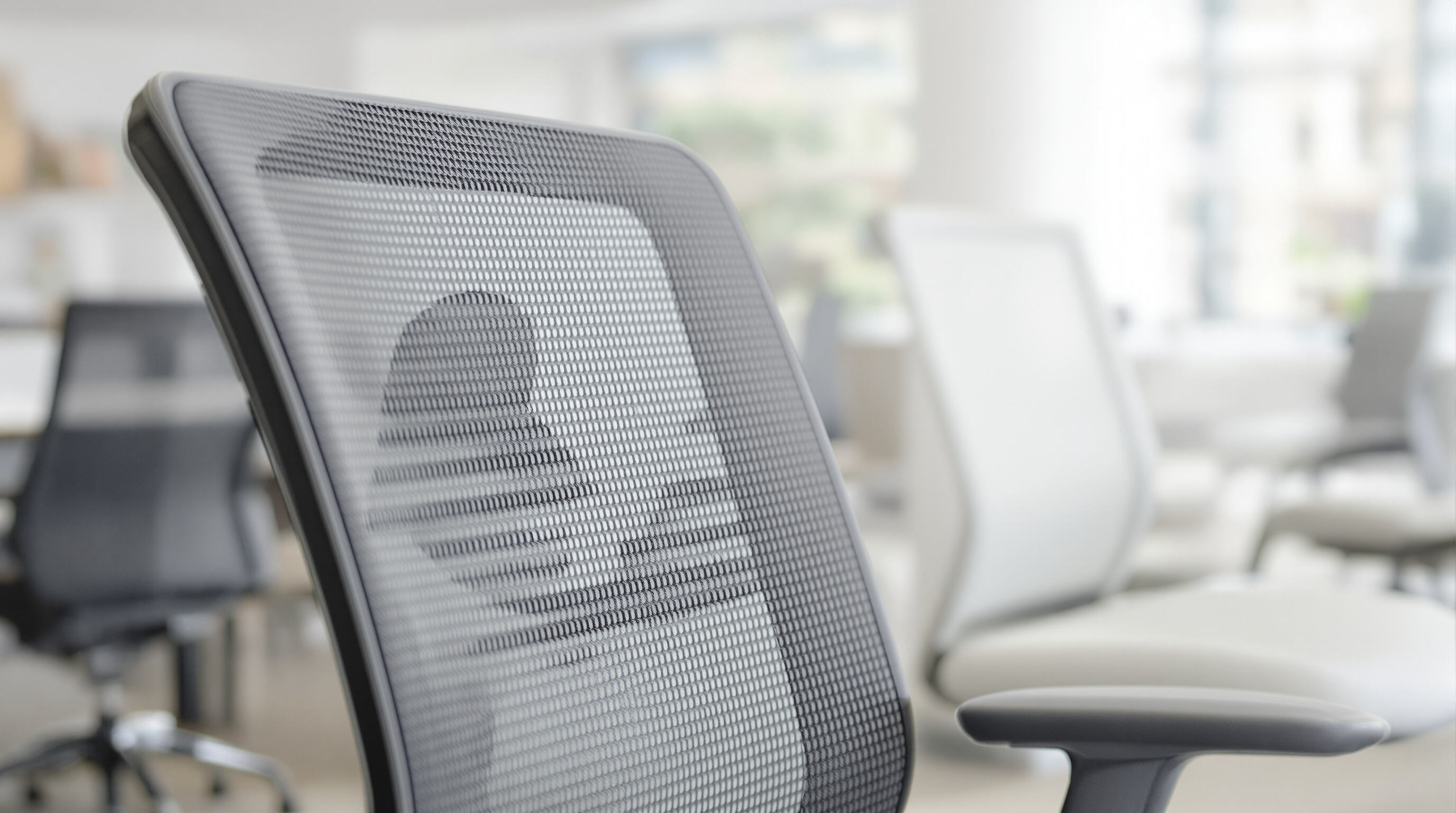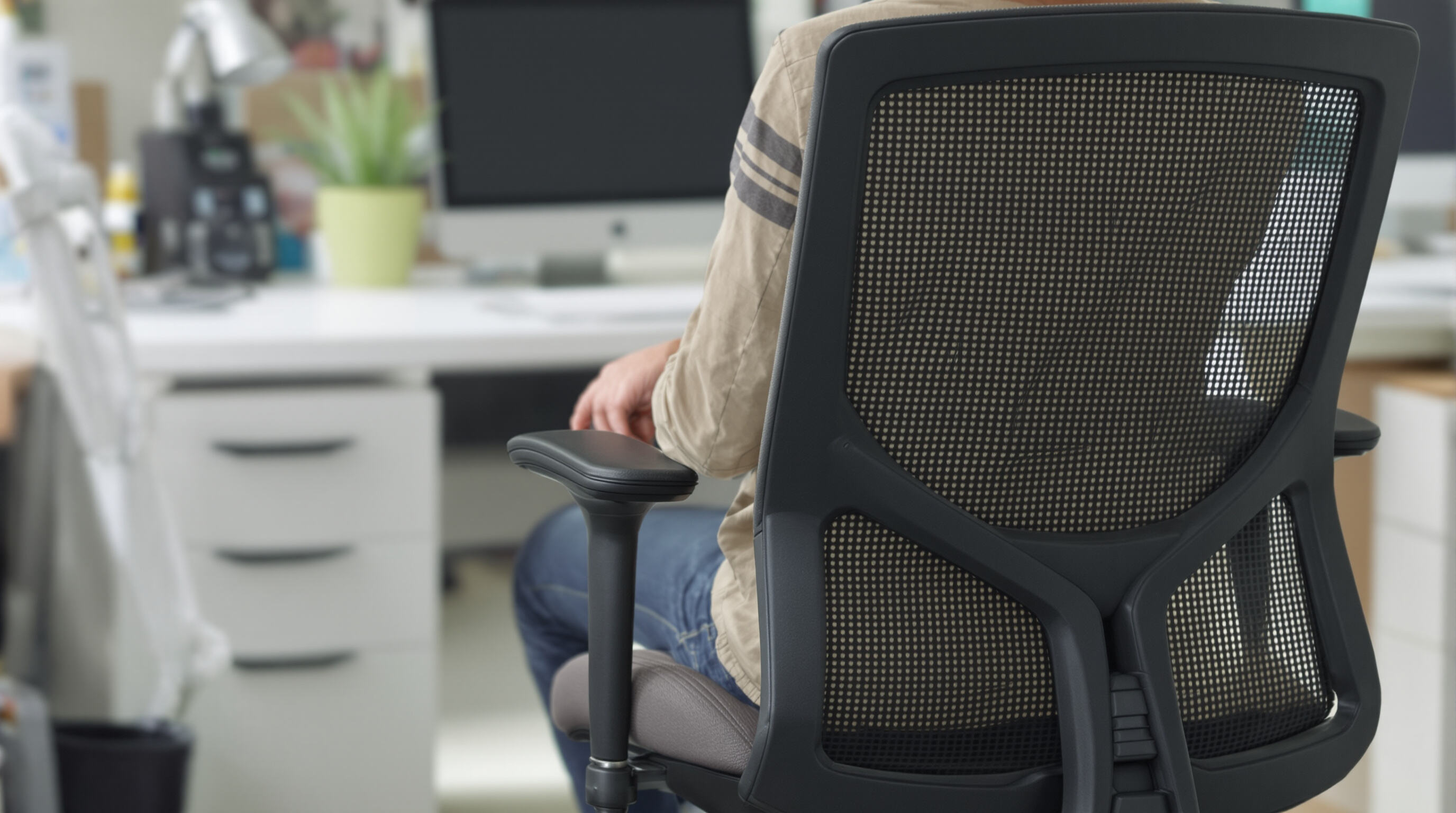Superior Breathability and Airflow in Mesh Chair Design

How Mesh Chair Materials Enhance Airflow and Reduce Heat Retention
Mesh office chairs tackle the problem of getting too hot in closed office spaces thanks to some smart material design. The special woven structure made from quality polymer mesh lets air flow through much better than regular fabric seating options. Studies show these mesh designs can actually increase airflow by around three quarters compared to standard office chairs, which means people stay cooler throughout their day at work. According to research published in 2023, this kind of chair reduces trapped heat by about 40 percent over an eight hour work period. What makes these chairs so comfortable is how they create their own little cooling effect around where someone sits. The mesh works like a natural ventilation system, pulling sweat away from the skin instead of letting it build up as happens with traditional foam or leather office seating.
Scientific Principles Behind Ventilation and Cooling in Mesh Backrests
The cooling mechanism operates through three physical principles:
- Convective airflow through mesh pores (120–180 openings per square inch)
- Radial tensioning that maintains 0.8–1.2 mm air gaps between fibers
- Passive evaporative cooling from 37% faster moisture dispersion
These features enable mesh chairs to maintain an average seat temperature of 31°C in 25°C environments, compared to 35°C in leather alternatives (Thermal Comfort Institute 2023).
Comparison: Mesh vs. Foam and Leather Chairs in Warm Offices
| Metric | Mesh Chair | Foam Chair | Leather Chair |
|---|---|---|---|
| Heat Retention | 18% | 67% | 82% |
| Airflow Rate | 0.45 m³/min | 0.12 m³/min | 0.08 m³/min |
| Moisture Evaporation | 92% efficiency | 34% efficiency | 21% efficiency |
Data from a 12-month office study shows mesh users report 73% less "sticky chair" discomfort than leather chair users, with 59% fewer posture adjustments per hour due to heat-related discomfort.
Performance of Mesh Chairs in Hot and Humid Office Climates
Tropical workspaces demand seating solutions that actively combat heat retention while maintaining ergonomic support. Mesh chairs deliver measurable advantages in these environments through intentional airflow engineering absent in traditional padded or leather alternatives.
Why Mesh Chairs Outperform Traditional Seating in Tropical Environments
Mesh chairs are built with an open weave design that allows air to flow all around them without getting blocked by materials that trap heat. Foam cushions tend to soak up body warmth like little sponges, but mesh backrests actually release heat about 40 percent quicker according to those humidity controlled tests we've seen. The difference matters a lot in office environments across Southeast Asia. Leather seats there can get anywhere from 5 to 7 degrees Celsius hotter than the surrounding air just half an hour after someone sits down. That kind of temperature build up makes a world of difference when trying to stay comfortable during long workdays.
Real-World Data on Temperature Regulation and User Comfort in Humid Offices
Field studies in Manila call centers reveal employees using mesh chairs experience:
- 53% less back moisture accumulation during 8-hour shifts
- 61% reduction in heat-related posture adjustments
- 28% faster task completion rates during peak afternoon hours
Humidity sensors show mesh surfaces maintain 25% lower moisture retention compared to vinyl-coated chairs—a key factor in preventing microbial growth and material degradation.
Case Study: Improved Employee Comfort After Switching to Mesh Chairs in a Southeast Asian Office
A Kuala Lumpur tech firm reported transformative results after replacing 120 traditional chairs with mesh models:
| Metric | Improvement | Timeframe |
|---|---|---|
| Heat discomfort complaints | 68% “ | 3 months |
| Chair-related fatigue | 55% “ | 6 months |
| Ergonomic satisfaction | 44% ‘ | 1 year |
Maintenance costs simultaneously dropped 37% due to reduced foam breakdown from chronic moisture exposure—a common failure point in humid climates.
Impact of Office Climate on Chair Selection and Productivity
Evaluating Stuffy Office Conditions: When a Mesh Chair Becomes Essential
Offices that don't get enough fresh air can make people feel uncomfortable from the heat about 25% more often than places with good ventilation according to research from Ergonomic Research Group last year. When someone sits down in those stuffy rooms, regular office chairs made of foam or leather tend to hold onto body heat, making seats warmer by around 4 to 7 degrees Fahrenheit just half an hour later. Mesh chairs work differently because their woven backs let air flow through constantly, which cuts down on moisture collecting around the body by nearly two thirds in hotter regions. Looking at actual workplaces in 2023 showed something interesting too: almost nine out of ten workers without AC felt much better when they started using mesh chairs instead of their old ones.
How Poor Ventilation in Non-Mesh Chairs Affects Focus and Work Efficiency
When people sit in chairs that don't breathe well, their brainpower takes a hit. Research from the National Institute for Occupational Safety back in 2024 found that after just 90 minutes on these hot seats, folks make about 22 percent more mistakes while working. Sitting too long in stuffy chairs makes people fidget around a lot more too – around 40% increase in restlessness when compared to those nice mesh options. The heat gets trapped, causing sweat build up which leads to constant shifting positions. Companies that switched to mesh seating saw roughly 19% drop in those little breaks where employees stop what they're doing because they're uncomfortable from the temperature. So basically, how breathable chair materials are matters quite a bit for keeping productivity going strong in office environments.
Long-Term Comfort and Health Benefits of Mesh Seating

Reducing Sweat and Fatigue During Prolonged Sitting with Breathable Mesh
Mesh chairs really help fight off that uncomfortable feeling at work because air can keep flowing through the breathable parts of both the back and seat area. According to research published in 2023 on how offices affect our bodies, people who sat in mesh chairs noticed about 38 percent less sweating around their lower backs than those stuck with regular foam chairs. This makes a big difference when someone needs to sit for long periods without getting too hot or tired. What makes these chairs special is how they respond to body weight distribution. The material adjusts itself so it doesn't push too hard on any one spot while still supporting proper spine positioning. Workers actually stay comfortable about an hour and twelve minutes longer before starting to feel pain from bad posture, according to findings shared in the Occupational Health Journal back in 2022.
Medical Insights on Heat Buildup and Circulatory Comfort in Office Workers
Traditional office chairs tend to trap too much heat, raising skin temps around 2 to 3 degrees Celsius after just an hour and a half of sitting. This warmth buildup actually contributes to poorer blood circulation and makes it harder to stay focused on tasks. Looking at real world data from 2024, researchers studied what happened when 500 office employees switched to mesh seating options. The results were pretty telling: workers reported about 19 percent less leg numbness issues, and their ability to concentrate improved by roughly 27% during those tough afternoon hours at work. Many physical therapists now point towards mesh chairs as better choices because they allow small body movements and help expand the diaphragm area. These factors matter quite a bit for keeping blood flowing properly even when someone spends most of the day seated.
Frequently Asked Questions
Why are mesh chairs better for airflow compared to foam or leather chairs?
Mesh chairs have an open weave design that facilitates ventilation and helps to prevent heat buildup, whereas foam and leather trap heat and moisture.
How do mesh chairs combat heat in tropical environments?
Mesh chairs release heat about 40% more quickly than foam cushions, which helps maintain comfort in hot and humid climates.
What are the ergonomic benefits of mesh seating?
Mesh chairs offer better support for body weight distribution and spine positioning, resulting in longer comfort durations during prolonged sitting.
How does chair breathability impact productivity?
Breathable chair materials reduce discomfort and restlessness, leading to fewer breaks and better focus and work efficiency.

